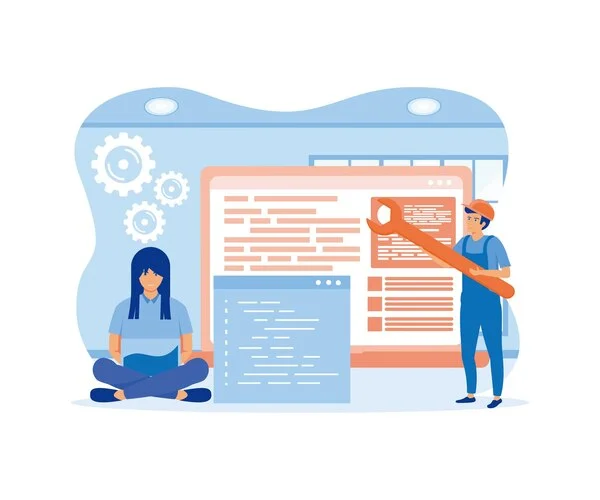Internal PR is the forgotten force that can make your company not just famous, but desirable. Over the years of working in this field, I have seen how a strong corporate image can not only increase employee motivation, but also significantly increase profits. There are key tactics in the treasure trove of internal PR strategy that have changed the rules of the game.

Glossary
🎯 Internal PR (Internal PR) - internal communication strategy organization aimed at creating a positive image of the company among employees.
🗣️ Corporate culture - system of values, norms and customs that determine the style of work and interaction of employees in the company.
📊 Communications - exchange of information between employees and leadership, which can take place through various channels such as email, internal meetings, etc.
🏗️ Internal PR system - a structured approach to organization of communications, including planning, implementation of activities and evaluation of their effectiveness.
🎬 Information space - a set of channels and platforms to distribute information within the company, including newsletters and internal publications.
📈 Results monitoring - the process of assessing the effectiveness of activities internal PR, which includes analysis of achievements and identification of weaknesses.
📝 Change Plan - a document describing the steps necessary to improve internal PR and change corporate culture.
🔍 Corporate culture analysis - assessment of the current situation in the company in order to identify problems and opportunities for improving internal PR.
👥 Internal PR tasks - specific actions, aimed at improving communications, increasing employee engagement and creating a positive image of the company.
🔧 Internal PR tools - various methods and means used to implement internal PR, such as events, trainings, employee surveys, etc.
📅 Formation of rules and standards - setting norms behavior and communication standards that must be observed by all company employees.
🌐 Who deals with internal PR - specialists in corporate communications, HR department and managers responsible for implementation and support of internal communications.
Effective internal communications in the company
If I had to pick one key aspect of internal PR that can truly change the atmosphere in any company, it would certainly be communications. Not long ago, in one of the organizations in which I worked, a managerial confusion arose: the deadlines for completing the same task were assigned by different managers, and it seemed that each of them had his own opinion on how exactly the current tasks should be solved.

🎯 It's become pure chaos! Workers began changing their reports every time they caught the attention of a new boss. As a result, the company lost time and employees lost motivation. But internal communications are not just about conveying information. It's also about understanding what is expected of us and how we can cope with it.
According to my observations, the most important thing is to create a unified communication platform where information could be disseminated quickly and without contradictions. Each employee should feel part of the team and understand exactly how their contribution affects the overall success. In this situation, I suggested several steps:
- Creation of a single information portal: Since employees It was not always possible to meet in person or talk on the phone, I insisted on creating a common platform where all important announcements, schedules and calls would be united.
- Regular reports and updates: Once a week we had informal meetings where we discussed current tasks and achievements, conducted brainstorming sessions. This created an atmosphere of trust and openness.
- Feedback: I helped set up a service for collecting anonymous employee opinions on the work of management and internal processes. This allowed many to speak up and suggest improvements, which increased engagement.
As a result, in just a few months, the corporate culture changed for the better. Employees began to work more actively as a team, share experiences and experience less stress.
Having established internal communications, the company managed to achieve significant productivity indicators.
Building a Strong Company Culture
Company culture is what I believe to be the foundation on which every successful organization is built. Looking back at all the companies I've worked with, it became obvious that cultural values determined how comfortable employees were to work there.
When I was just starting out in my career, I encountered a company that was competitive instead of collaborative. Employees often grinned and exchanged barbs instead of supporting and helping each other. And this toxicity affected overall performance. 😊
Understanding this situation, I decided to initiate the stages of forming a new corporate culture:
- Defining Shared Values: Together with the team, we developed a list of principles that everyone could agree on. This helped us join forces and create a common foundation.
- Team skills training: Organized regular training on team building. Once, after such training, I heard one of the employees say: “Now I see how we can work together to achieve common goals.”
- Recognize Successes: We have introduced the practice of recognizing team achievements at a team meeting. I think it created a more positive atmosphere.
In the end, despite the initial difficulties, it was possible to achieve an atmosphere where everyone felt valued, respected and trusted by from colleagues, which certainly led to the growth of the company.
Brief summary of internal PR
| Step | Action | Target |
|---|---|---|
| 1. | Creation of a single information portal | Ensuring transparency and accessibility of information |
| 2. | Regular reports and updates | Increase interaction and increase engagement |
| 3. | Feedback | Optimizing business processes and reducing stress among employees |
| 4. | Defining shared values | Creating a common foundation for effective teamwork |
| 5. | Team Skills Training | Increasing the efficiency of relationships within the team |
| 6. | Recognize successes | Maintain a positive atmosphere and motivation |
I believe that internal PR can create powerful potential within a company when employees feel trusted, understand their values, and can work toward common goals.
How to set up internal PR for success
How I was once faced with an issue that seemed to threaten corporate harmony and how this became the impetus for creating an effective internal PR strategy. It is important to understand that internal PR is not just words on paper, it is the soul of the company, its corporate culture. I remember one case when serious misunderstandings arose in our team. Due to different approaches to communication between employees of different ages and cultures, the work process began to stall. Young people tried to joke, but older colleagues perceived this as disrespect. As a result, the atmosphere became so tense that even the best coffee could not relieve the tension.

At this difficult moment, I came up with the idea of establishing standards of behavior and organizing regular team building activities. It was necessary to create a unified information space where everyone could easily find the information they need. This is how the concept of the “Corporate InfoCenter” was born, which became the main connecting link for all employees.
First of all, I assembled a team to analyze the current situation. We did a survey that showed that 80% of employees are dissatisfied with the insufficient level of communication within the company. It became obvious to everyone that this approach undermines not only trust, but also the company’s profits.
By installing a ticket system, we gave all employees the opportunity to unite and see correspondence with clients and colleagues. This decision freed up not only time, but also energy, as everyone began to feel like part of the team. Participating in general chats and sharing ideas through an open platform created an atmosphere of trust where everyone was interested in participating in the discussions.
To overcome age and cultural barriers, we organized training workshops. One of the most successful formats was “Know Your Neighbor”, where employees from different representative groups shared their stories, traditions and culture. The result was not long in coming: this project united the team and significantly improved intercollegial relations.
To further develop the concept of internal PR, it was important for me to involve top management. I proposed holding open meetings with employees several times during which managers shared strategic goals and listened to employee input. This openness created a friendly atmosphere and strengthened interaction.
The final stage was the implementation of standards of behavior and communication ethics, which created a positive work environment. I have noticed that employees are more satisfied and engaged when they understand shared policies and values. As a result, not only the number of conflicts decreased, but also the index of satisfaction at work increased significantly.
Step-by-step plan for successful implementation of internal PR
| Step | Action | Description |
|---|---|---|
| 1 | Conducting a survey | Find out what worries employees about communication |
| 2 | Creation of a single information space | Implement a ticket system where all communications will be visible |
| 3 | Organization of training seminars | Give opportunity for employees to share their experience and culture |
| 4 | Hold meetings with top managers | Ensure open dialogues where management can listen to employee opinions |
| 5 | Implementation of standards of conduct | Define general rules and values to create a harmonious work environment |

So, for the next holiday we organized a big corporate event, where everyone could show their talents - from culinary to artistic. These moments enriched us, smoothed over disbelief and resistance, and ultimately brought everyone on the team closer to each other.
There were elements of storm, distrust and confrontation in this story, but through our persistence, we created internal PR that became a powerful catalyst for corporate unity and productivity.
How to create an effective corporate culture
Analyze corporate needs
When I first started working in internal PR, it became apparent to me how important it was to understand employee expectations and pessimism. In the process of creating a company culture, I immersed myself in the world of anonymous surveys and interviews. I once conducted an anonymous survey among employees to find out the true reasons for dissatisfaction in the workplace. Interestingly, 65% of employees expressed doubts about supporting the company's values. 🤔 Sound familiar?

In addition to the surveys, we organized several informal meetings where everyone could openly express their thoughts. One employee, Alexey, shared his opinion: “When you feel that your opinion is not important, your motivation to work weakens.” These words were like a breath of fresh air. This and other opinions helped highlight clear problems in corporate culture. We started by looking for challenges such as low turnover rates, conflicts, and dissatisfaction with management. Each problem was like a warning sign that gently nudged us into action.
“Employee expectations are the anchor for internal PR, which must build cohesion and trust,” - Lawrence Joseph Ellison, American entrepreneur, co-founder, chairman of the board Directors and Chief Technology Officer of Oracle Corporation, former CEO of Oracle, largest shareholder of NetSuite, early investor in Salesforce.
Change plan being prepared
Having discovered the problems, we decided to develop a plan. It was important not just to record this on paper, but to create specific, measurable tasks. I remember how our team gathered at a round table and we came up with an idea: to hold three informal meetings between employees and top managers. This was supposed to change the atmosphere and create trust.
It was necessary to write down each task. I prepared a plan for the year with specific points - three meetings with management, publishing articles in the corporate newspaper and setting up an anonymous channel for feedback. We even included deadlines and who is responsible for each task.
Many of us might think this is a challenging job, but in fact, it was an exciting opportunity to change the culture within the company. 🚀 How would you feel about such responsibility?
Creating an information space
Creating an information space was a real discovery for me. We divided the information into two blocks: work and corporate. To begin with, I implemented a unified system for storing work data and materials. This really made sharing information easier.
Our corporate newspaper became a kind of beacon where employees could turn for news about the life of the company. I think many of you will take it to the next level when you see how easy it is to find the information you need, because the number of conflicts due to misunderstandings has decreased by 60%. 🎉
The key point was to take into account the opinions of colleagues about which sources of information are more convenient for them. “If it’s easier for someone to read on paper, let it be a newspaper, but someone prefers a mobile application,” answered one of the employees.
Form rules and standards
It seems that we all strive for clear rules. At that moment, when I began to draw up a code of ethics, the idea was born about how important it is to have structured and understandable rules for everyone.

The process turned out to be more fun than I expected. I collected all the rules and procedures in one document, which became not just a formality, but a real guide for employees. When I introduced it to my team, one of the managers remarked: “Now at least it’s clear what to strive for.” 📜
The Code included not only mandatory rules of conduct, but also recommendations for advanced training. The need for such a document was felt, which, on the one hand, strictly regulated the situation, and on the other, did not create a sense of control.
Monitoring the results
After launching the information system, it was important to monitor changes in the team. Only a week had passed and I had a feeling that something had gone wrong. Some employees began to show dissatisfaction with the new rules.
The more I talked to people, the more I realized that change sometimes causes resentment. First of all, we decided to collect opinions in order to understand what has become truly problematic. It turned out that some of the initiatives introduced were not entirely successful.
As we discussed the issues, we identified metrics that became indicative of measuring success. Employee turnover index, job satisfaction questionnaires - all these became our warning lights for further analysis. ⚠️
Internal PR tools
During my work, I felt how a variety of tools can affect employee engagement. We used both digital technologies and traditional media: corporate stands, newspapers and even internal seminars.
Recently, while conducting an internal workshop, I saw employees' creative ideas take shape. “It was an amazing experience when everyone said what they thought, and not what was expected to be heard,” shared one of the participants. 🌟
Unfortunately, this tool is not suitable for everyone. It's important to understand how employees are reacting during the launch process; such observations help you fine-tune your message.
| Steps to Implement Effective PR Strategies | Description |
|---|---|
| 1 . Needs analysis | Conducting surveys and interviews to identify problems |
| 2. Change plans | Creating clear and structured action plans |
| 3. Information space | Combining all significant data in one place |
| 4. Rules and standards | Development of a code of ethics accessible to all |
| 5. Monitoring results | Setting metrics and regularly evaluating activities |
| 6. Using tools | Using a variety of formats to engage |
Of course, these tools have become fundamental to creating a healthy company culture. The emotion our employees felt when they saw the changes was invaluable. I hope you can achieve similar results!

Often Internal PR FAQs
What is internal PR?
Internal PR is a communication strategy within a company aimed at creating a positive corporate image and strengthening relationships between employees.
What are the key aspects of internal PR?
Key aspects include building communications, creating a corporate culture, performing internal PR tasks and monitoring results.
Who handles internal PR in the company?
Internal PR is carried out by PR managers, HR specialists and other employees responsible for communication within the organization.
How is an internal PR system built?
The internal PR system is formed through analysis of corporate culture, preparation of a change plan, creation of an information space and implementation of standards.
How is corporate culture analyzed?
Corporate culture is analyzed through surveys, interviews, monitoring internal communications and assessing employee satisfaction.
What does a change plan for internal PR include?
The change plan includes goals, strategies, selected PR tools, as well as an implementation schedule and mechanisms for evaluating results.
How to create an information space in a company?
The information space is created through internal portals, mailings, meetings and news that help exchange information and maintain communication between employees.
How are the rules and standards of internal PR formed?
Rules and standards are formed based on an analysis of the successful experience of other companies, an internal survey of employees and recommendations from PR specialists.
How are internal PR results monitored?
Results are monitored through employee surveys, feedback analysis, engagement assessments and studying changes in corporate culture.
What tools are used in internal PR?
Internal PR uses tools such as internal mailings, corporate events, training programs, surveys and digital platforms to share information.
Thanks for reading and for became wiser! 🌟
Each of us now has the key to the intriguing world of inner PR. I went through this process myself when I worked on a project that transformed our company's image. The introduction of technology and the creation of open communication channels not only strengthened connections within the team, but also created an atmosphere of trust where everyone felt like an important part of the common cause. 💪 Now that you are equipped with knowledge, feel free to implement these ideas in your organization. Let me know in the comments how you plan to implement these strategies!

Article Target
Inform and inspire readers to implement internal PR strategies.
Target audience
HR managers, marketers, public relations managers.
Hashtags
Save a link to this article
Yuri Seleznev
Copywriter ElbuzI unravel the secrets of successful online store automation, plunging into the world of effective solutions and secrets of online business - welcome to my virtual labyrinth, where every line is the key to automated success!
Discussion of the topic – Internal PR
Main aspects of internal PR, its importance and methods of implementation in the company.
Latest comments
12 comments
Write a comment
Your email address will not be published. Required fields are checked *



























Мария Лопес
Internal PR really plays a key role! By the way, our company had several successful examples when we implemented a new Internet platform for employee communication. This brought the team together and improved internal communications. 💬
Станислав Неудахин
Maria, how did you deal with employee resistance when introducing a new platform? It's always difficult. I believe that for there to be success, you need to explain well why it is needed. 🤔
Александра Клейн
Stanislav, yes, it is important to involve people! We have had the experience of organizing meetings with our colleagues to discuss changes. This reduced stress and dissatisfaction. 🚀
Юрий Селезнёв
I agree with you, involvement is important! But don't forget that internal PR also includes ongoing feedback and initiatives from employees so that they can see the results of their suggestions.
Лоренц Вайс
Yuri, what methods do you recommend for receiving this feedback? We try different approaches, but not all work equally effectively. 🤷♂️
Эва Ковальчук
In my experience, anonymous surveys are very effective in helping employees express their thoughts, especially when it comes to difficult issues. 🌟
Генрик Мазур
But just remember that survey results need to be discussed with the team. Simply ignoring them can lead to resentment. 😒
Лия Симонова
Henrik, you are right. Separate groups can be created to discuss results and implement ideas. This will also be a good motivator for employees! 🥳
Ханс Фишер
I’m curious, do you think it’s important to include gamification elements in internal PR? It worked like a charm for our team! 🎮
Федор Лебедев
Come on, gamification? These are just jokes for young people. The main thing is stability and routine methods! It has always been this way, and it will always be so. 😤
Оливия Давидова
Fedor, don’t take away our opportunity to be creative! New ideas are what energize the atmosphere in the team. You need to try, what if it works? 🔥
Юрий Селезнёв
Fedor, even if you still think that the old methods work, it is worth leaving room for innovation. Times are changing, and we need to change too.